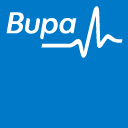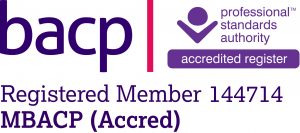Counsellors and psychotherapists work from a variety of theoretical approaches with their clients, ranging from psychoanalysis (originally practised by Sigmund Freud) through to humanistic psychotherapy (based on personal growth and self development) to the behavioural therapies used for dealing with specific phobias and anxieties.
I work integratively, which means I combine several distinct models of counselling and psychotherapy and use them together rather than separately (eclectically).
The following is an alphabetical list of the theoretical approaches I practise, with a brief description of their meanings, the ways they are used therapeutically with clients (adapted from the BACP website – www.bacp.co.uk) and videos illustrating what it feels like to experience some of the models:
• Cognitive Behavioural Therapy (CBT) combines cognitive and behavioural techniques. Clients are taught ways to change thoughts and expectations including the relaxation techniques. It has been effective for stress-related ailments, phobias, obsessions, eating disorders and major depression (alongside medication).
• Cognitive Therapy uses the power of the mind to influence behaviour. It is based on the theory that previous experiences can adversely affect self-perception and condition attitude, emotions and ability to deal with certain situations. It works by helping the client to identify, question and change self-denigrating thoughts, thus altering habitual responses and behaviour. It can help pessimistic or depressed people to view things from a more optimistic perspective.
• Behavioural Therapy is based on the belief that behaviour is learnt in response to past experience and can be unlearnt, or reconditioned, without analysing the past to find the reason for the behaviour. It works well for compulsive and obsessive behaviour, fears, phobias and addictions.
➢ Watch a video explaining Cognitive Behavioural Therapy (CBT):Cognitive Behavioural Therapy
• Eye Movement Desensitisation & Reprocessing (EMDR) The mind can often heal itself naturally, in the same way as the body does. Much of this natural coping mechanism occurs during sleep, particularly during rapid eye movement (REM) sleep. Francine Shapiro developed Eye Movement Desensitisation and Reprocessing (EMDR) in 1987, utilising this natural process in order to successfully treat Post-traumatic Stress Disorder (PTSD). Since then, EMDR has been used to effectively treat a wide range of mental health problems.
• Existential Counselling is based on the belief that life has no essential (given) meaning: any meaning has to be found or created. Existential counselling involves making sense of life through a personal world view and includes a willingness to face one’s life and life problems.
• Gestalt Therapy derived its name from German for “organised whole”. Developed by Fritz Perls, it is based on his belief that the human response to experiences is summed up in a person’s thoughts, feeling and actions. The client gains self-awareness by analysing behaviour and body language and giving expression to repressed feelings. Treatment often includes acting out scenarios (e.g. two chair work) and dream recall.
➢ Watch the video of Gestalt Therapy in action with the man himself, Fritz Perls, in session with Gloria: Gestalt Therapy Session
• Humanistic Psychotherapy embraces techniques coming from the “personal growth movement” and encourages people to explore their feelings and take responsibility for their thoughts and actions. Emphasis is on the self-development and achieving highest potential rather than dysfunctional behaviour. “Client-Centred” or “Non-Directive” approach is often used and the therapy can be described as “holistic”. The client’s creative instincts may be used to explore and resolve personal issues.
• Neuro-Linguistic Programming (NLP) combines cognitive behavioural and humanistic therapies with hypnotherapy. It works on the theory that life experiences, from birth onwards, programme the way a person sees the world. The practitioner helps the client to discover how he/she has learnt to think or feel so that he/she can take control of his/her actions. The client is taught how to change speech and body language in order to communicate better and bring about personal change.
• Person-Centred Counselling, devised by Carl Rogers and also called “client centred” or “Rogerian” counselling, is based on the assumption that an individual (client) seeking help in the resolution of a problem can enter into a relationship with another individual (counsellor) who is sufficiently accepting and permissive to allow the client to freely express emotions and feelings. This will enable the client to come to terms with negative feelings, which may have caused emotional problems and develop inner resources. The objective is for the client to become able to perceive himself as a person, with power and freedom to change, rather than an object.
➢ Watch a video summarizing Person-Centred Approach:Person-Centred Model
➢ Watch a video of Carl Rogers, explaining the main tenets of Person-Centred Therapy: Carl Rogers
➢ Watch a video of a session of Person-Centred Counselling, with Carl Rogers and Gloria: Person-Centred Therapy Session
• Psychodynamic Psychotherapy/Counselling stresses the importance of the unconscious and past experiences in determining current behaviour. The client is encouraged to talk about childhood relationships with parents and other significant people and the therapist focuses on the client/therapist relationship (the dynamics) and in particular on the transference. Transference is when the client projects onto the therapist feelings experienced in previous significant relationships. The psychodynamic approach is derived from psychoanalysis but usually provides a quicker solution to emotional problems.
➢ Watch a video explaining Psychodynamic approach and its roots in Freudian thinking: Psychodynamic Theory
• Systemic Therapy aims to change the transactional pattern of members of the system. It can be used as the generic term for family therapy and marital therapy.




